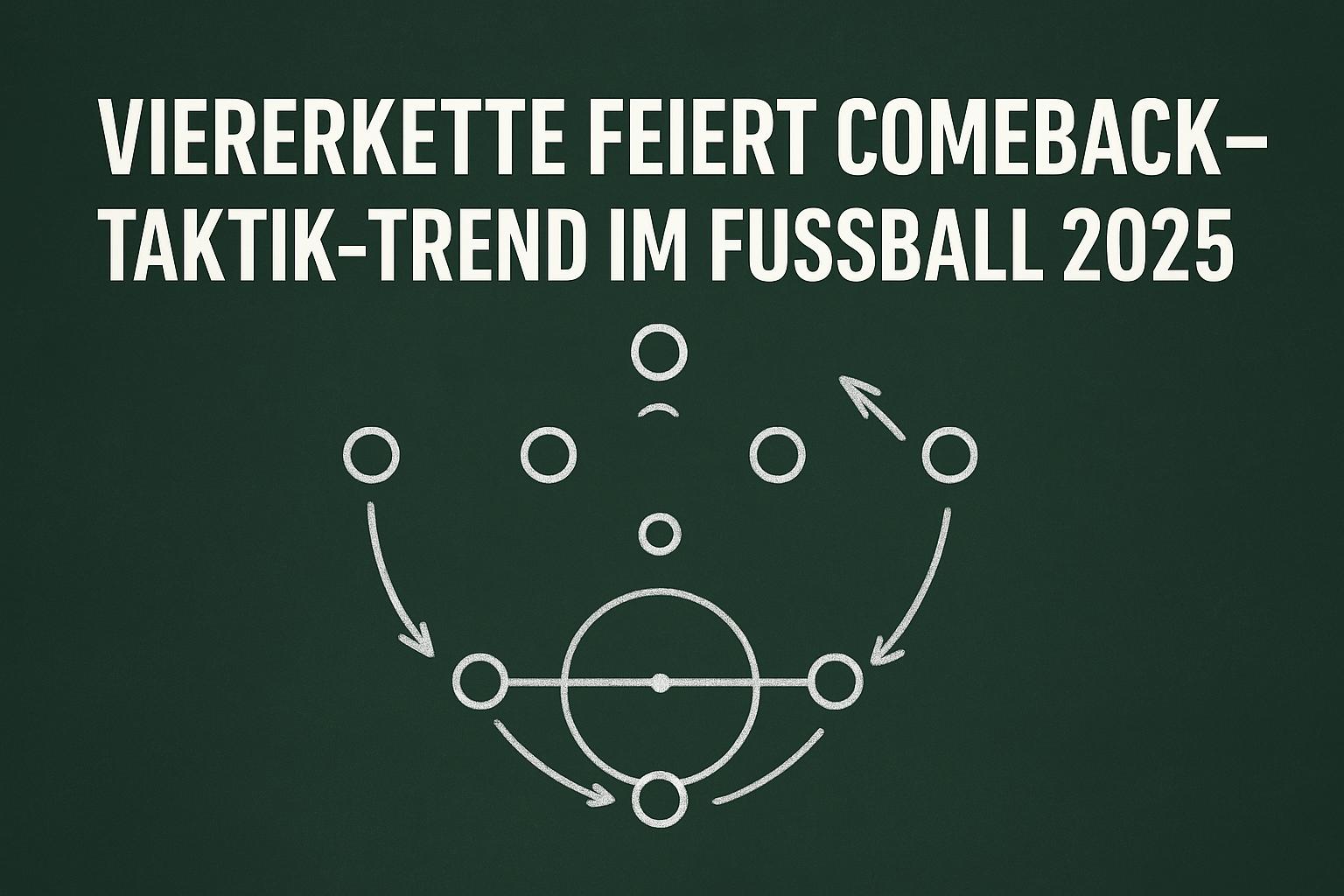For a long time it was true Chain of four As the measure of all things in football. For decades, she was the preferred defensive formation of almost all top teams-stable, proven, effective. But in recent years the picture has changed: more and more coaches are relying on three or five chains in order to react more flexibly to the game. But now the sheet seems to turn again. Is the chain back – and if so, why?
From the standard solution to the option under many
The classic chain of four had been set for decades. Whether in the Bundesliga, in the Premier League or at World Championships- the formation with two inner and two full-back was the defensive tactical basis of the game. However, with the advent of the ball-owned game and more flexible offensive strategies, many coaches began to switch to three or five chains.
Thomas Tuchel, Antonio Conte or Julian Nagelsmann set in different variants on three chains to create overpayment in the game structure and to better control the center. The chain of five – defensively aligned – should bring more security, especially against fast switching teams.

Why are teams returning to the chain of four now?
Despite the tactical advantages of the three-way or five chain, there is currently a clear trend: the chain of four is experiencing a comeback. Teams like Bayer Leverkusen Under Xabi Alonso, arsenal Under Mikel Arteta or the German national team under Julian Nagelsmann (after tactical tests with a chain of three), the classic chain of four is increasingly relying on again.
The reasons for this are varied:
- More balance between the offensive and the defensive: The chain of four allows more flexible play with a more offensive basic order without extreme protection.
- Easier automatisms: Especially for young teams or in national teams with little play together, the chain of four is often well -rehearsed and easier to implement.
- Modern full -back as a key player: Players like Frimpong, Davies or Alexander-Arnold interpret their role extremely aggressively-that works better in a chain of four with clear role distributions.
Four chain vs. triple chain – a question of philosophy
Of course there is no tactical panacea. The choice of defensive formation continues to depend heavily on the game philosophy of the trainer, the individual play strength of the defenders and the planned match plan. A flexible three chain can continue to make sense in tight champions League duels or particularly pressing opponents.
Conclusion: no return to the old order – but more clarity
The Renaissance of the chain of four does not mean that we travel back to the 2000s. Rather, it turns out: In a world of constant tactical innovations, classic systems such as the chain of four are unmistakedbut still highly effective – if you modernly interpreted become.
What remains: the basic order is only the foundation. It is crucial how variable, aggressive and intelligent a team fills them.
(Tagstotranslate) Analysis
